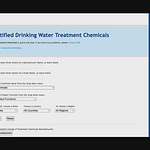In this episode, Hannah and Victoria explore the hyper-controversialized world of soy, one of the most studied yet misunderstood foods in our diet.
History:
Isoflavones first came to the attention of the scientific community in the 1940s because of fertility problems observed in sheep grazing on a type of isoflavone-rich clover.
The most economically important bean in the world
China 7000 BCE
Soybeans were introduced into the United States in 1804 and became particularly important in the South and Midwest in the mid-20th century - the majority of soybean crops are genetically modified for resistance to the herbicide glyphosate*. Brazil and Argentina are also major producers.
Evidence:
“Soy” = 23,500ish results in PubMed, Last 10 years, about 10K results.
Phytoestrogens are a broad group of compounds that consist of isoflavones, lignans, and coumestans. Of these, isoflavones are heterocyclic phenols, the main constituents of which are genistein, daidzein, and glycitein. They have a similar structure to 17 beta-estradiol and have been shown to have biological activity exerting estrogen-like effects both in vitro and in vivo.
Interesting note on isoflavones and cultural differences in consumption and genetic differences in metabolism, from M. Messina, Soy and Health Update https://www.ncbi.nlm.nih.gov/pmc/articles/PMC5188409/ :
“...mean isoflavone intake among adults ranges from about 30–50 mg/day in Japan but is less than 3 mg/day in the United States, Canada, and Europe [60,61,62,63,64,65,66,67]”
Understanding soy intake by milligram:
It is difficult for the average consumer to even understand the consumption of isoflavones. For example, according to United States Department of Agriculture data and an assumption of about a half-cup serving, most vegetables contain <1 mg, miso soup 1–2 mg, cooked edamame 15–20 mg, raw pistachios 1–3 mg, most soymilks 1–10 mg, and some higher soy content cereals 20–100 mg (5). “Meatless” meats contain anywhere from very little to high amounts of isoflavones depending on how they are produced. Much of the content of all soy products depends on processing, whether alcohol or water extracted, and the crop or variety. Needless to say, it is quite complicated. https://www.fertstert.org/article/S0015-0282(19)30621-1/fulltext
Glyphosate residue potentially disrupting our microbiomes: https://www.ncbi.nlm.nih.gov/pmc/articles/PMC8959108/
https://www.ncbi.nlm.nih.gov/pmc/articles/PMC10561581/
https://www.sciencedirect.com/science/article/pii/S0169534722002294
Equol:
“In regard to isoflavone metabolism, a striking difference among individuals is that only about 25% of non-Asians and 50% of Asians host the intestinal bacteria that convert daidzein into the isoflavonoid equol* [80]. In 2002, Setchell et al. (2002) proposed that those individuals who host these bacteria are more likely to benefit from soyfood consumption [81]”
Equol [7-hydroxy-3-(4′-hydroxyphenyl)-chroman], an isoflavan produced by intestinal bacteria in response to soy isoflavone intake in some but not all humans, exhibits a wide range of biological properties: https://pubmed.ncbi.nlm.nih.gov/20519411/
More on equol: https://gutpathogens.biomedcentral.com/articles/10.1186/s13099-024-00625-9
Big picture view of interactions with hormones:
Specifically, soy isoflavones are the phytoestrogen focus of the study published in this issue from Salsano et al., because they are very chemically similar to 17β-estradiol (2). The two predominant soy isoflavones, genistein, and daidzein, bind primarily to estrogen receptor (ER) β but remain very weak estrogens compared with endogenous E2. There is data that they may act by both hormonal and nonhormonal pathways, which include arresting or altering cellular growth through kinases or even epigenetics (3). https://www.fertstert.org/article/S0015-0282(19)30621-1/fulltext
A Brief Historical Overview of the Past Two Decades of Soy and Isoflavone Research
Mark Messina, 2010
https://www.sciencedirect.com/science/article/pii/S0022316622132049#bib84
Baby formula:
https://pubmed.ncbi.nlm.nih.gov/9217716/ Comparative Study Lancet
. 1997 Jul 5;350(9070):23-7. doi: 10.1016/S0140-6736(96)09480-9.
Exposure of infants to phytoestrogens from soy-based infant formula “From the concentrations of isoflavones in these formulas (means 32-47 micrograms/mL), the typical daily volume of milk consumed, and average body weight, a 4-month-old infant fed soy formula would be exposed to 28-47 per day, or about 4.5-8.0 mg/kg body weight per day, of total isoflavones. Mean (SD) plasma concentrations of genistein and daidzein in the seven infants fed soy-based formulas were 684 (443) ng/mL and 295 (60) ng/mL, respectively, which was significantly greater (p < 0.05) than in the infants fed either cow-milk formulas (3.2 [0.7] and 2.1 [0.3] ng/mL), or human breast-milk (2.8 [0.7] and 1.4 [0.1] ng/mL), and an order of magnitude higher per bodyweight than typical plasma concentrations of adults consuming soy foods.”
https://www.ncbi.nlm.nih.gov/pmc/articles/PMC2661347/#b7-pch14109 Concerns for the use of soy-based formulas in infant nutrition
Paediatr Child Health. 2009
PMCID: PMC2661347
However, they are present in relatively large amounts in soy-based formulas, such that the total isoflavone content is approximately 40 μg/mL in ready-to-use soy formulas. Infants who consume these products have isoflavone plasma concentrations of approximately 13,000 to 22,000 times greater than their estradiol plasma concentrations. In contrast, the plasma concentrations of isoflavones in infants who are fed cow’s milk formula or breast milk are only 50 to 200 times greater than their estradiol plasma concentrations (7). There is concern that these isoflavones may mimic the actions of estradiol or alter estradiol metabolism, and consequently modify the processes influenced by estradiol. Despite this theoretical possibility, practical experience has shown that the millions of infants who have consumed these products since the 1960s appear to have grown and matured normally.
Fertility:
Inverse association between soy intake and sperm count in men (soy lowers sperm count): https://pubmed.ncbi.nlm.nih.gov/18650557/ …but, another study shows:
Dadizen (found in soy) good for sperm morphology, as well as red meat and whole milk https://onlinelibrary.wiley.com/doi/10.1111/andr.12858
Breast cancer:
Soy Isoflavones and Breast Cancer Risk: A Meta-analysis: https://pubmed.ncbi.nlm.nih.gov/35241506/
2022 meta of 8 studies and 477,832 women examined the AMOUNT of soy consumed and the connection to breast cancer - found the consumption of soy isoflavones can reduce the risk of breast cancer in pre-menopausal and post-menopausal women.
Bone health:
Soy Reduces Bone Turnover Markers in Women During Early Menopause: A Randomized Controlled Trial: https://pubmed.ncbi.nlm.nih.gov/27465911/
There was a significant increase in TSH and reduction in free thyroxine (p < 0.01) with SPI supplementation (200 white women given 15 g soy protein with 66 mg isoflavone (SPI) or 15 g soy protein alone (SP), daily for 6 months) though free tri-iodothyronine was unchanged. In conclusion, soy protein with isoflavones may confer a beneficial effect on bone health, analogous to the mode of action of antiresorptive agents, albeit to a less magnitude. There was a significant improvement of cardiovascular risk markers, but a significant increase in TSH and reduction in free thyroxine after SPI supplementation indicating a detrimental effect on thyroid function. © 2016 American Society for Bone and Mineral Research.
Soy Food Consumption, Exercise, and Body Mass Index and Osteoporotic Fracture Risk Among Breast Cancer Survivors: The Shanghai Breast Cancer Survival Study
https://www.ncbi.nlm.nih.gov/pmc/articles/PMC6527440/
High soy isoflavone intake was associated with reduced risk among pre-/perimenopausal patients (hazard ratio [HR] = 0.22, 95% confidence interval [CI] = 0.09 to 0.53, for soy isoflavone mg/d ≥56.06 vs <31.31; Ptrend < .001) but not among postmenopausal patients (Pinteraction < .01).
https://pubmed.ncbi.nlm.nih.gov/19794985/
Marked individual variation in isoflavone metabolism after a soy challenge can modulate the skeletal effect of isoflavones in premenopausal women
“Women in the soy group were divided into subgroups according to their ability to excrete more potent metabolites. Serum osteocalcin and urine deoxypyridinoline showed a tendency to increase after a challenge in equol high-excretors. Serum osteocalcin concentration in the genistein high-excretors increased significantly after a challenge (P=0.04) but did not increase in either the placebo or genistein low-excretors. An estrogenic antagonistic effect of isoflavones on bone turnover was observed in premenopausal women who are able to produce more potent metabolites.”
CVD:
https://pubmed.ncbi.nlm.nih.gov/29739677/ Same research group/ same participants as first bone turnover study
Conclusions: Supplementation with soy protein with isoflavones for 6 months significantly improved CVR markers and calculated CVR at 6 months during early menopause compared to soy protein without isoflavones.
Beneficial to CVD in early menopause
Likely beneficial for lupus:
Likely detrimental for people taking valproic acid:













Share this post